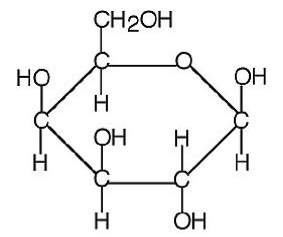
Galactose is abbreviated as Gal and the name galacto means milk, -ose represents sugar. Galactose is also a kind of monosaccharide sugar and tastes less sweet than glucose and fructose. The chemical molecular formula of Galactose is C6H12O6. Galactose is a C-4 epimer of glucose and exists in two forms, the one is open-chain and the other one is cyclic form. Galactose can be got by the hydrolysis of galactan, which is is a polymeric form of Galactose found in hemicellulose.
Scientists at Creative Proteomics utilize a highly quantitative method with high-performance liquid chromatography (HPLC) for the determination of Galactose levels in various samples, including Food, Beverage and more. High-Performance Liquid Chromatography (HPLC) using a differential refractive index detector (RID) for the determination of Galactose levels in a lot of biological samples. This Methodology provides accurate, reliable, and reproducible results of Galactose measurement, which enables us to analyze of Galactose levels in vitro and in vivo.
The main biochemical metabolic pathway in humans and other species is the Leloir pathway, is a metabolic pathway for the catabolism of D-Galactose. Of course, there are also several alternate pathways, such as the De Ley Doudoroff pathway. The first stage of the Leloir pathway is conversion of β-D-Galactose to α-D-Galactose by by the enzyme named Galactose mutarotase and α-D-Galactose is the initial active form in the pathway. In the second step, α-D-Galactose is phosphorylated to Galactose 1-phosphate by galactokinase. In the next step, alactose 1-phosphate is converted to UDP-Galactose using UDP-glucose as the uridine diphosphate source by the enzyme named D-Galactose-1-phosphate uridylyltransferase. In the finally step, UDP-Galactose is recycled to UDP-glucose by the enzyme named UDP-Galactose 4-epimerase for the transferase reaction.
The Russian-Polish botanist M. Tswett is generally recognized as the first person to establish the principles of chromatography. In a paper he presented in 1906, Tswett described how he filled a glass tube with chalk powder (CaCO3) and, by allowing an ether solution of chlorophyll to flow through the chalk, separated the chlorophyll into layers of different colors. He called this technique “chromatography”. Fundamentally, chromatography is a technique used to separate the components contained in a sample. High Performance Liquid Chromatography (HPLC) is a method able to separate non-volatile, thermally unstable, and polar components separate or in a mixture. HPLC is a type of chromatography that, because of its wide application range and quantitative accuracy, is regarded as an indispensable analytical technique, particularly in the field of organic chemistry. It is also widely used as a preparation technique for the isolation and purification of target components contained in mixtures.
Galactose Analysis Service at Creative Proteomics supports your research in Galactose Analysis. HPLC Based Analysis Service Platform enable us at Creative Proteomics offers you a state-of-the-art Analysis Service.
Sample Type
Food, Beverage and more
Method
High-Performance Liquid Chromatography (HPLC) using a differential refractive index detector (RID) for the determination of Galactose levels in a lot of biological samples. This Methodology provides accurate, reliable, and reproducible results of Galactose measurement, which enables us to analyze of Galactose levels in vitro and in vivo.
Send us your samples, you will get all information that you need!